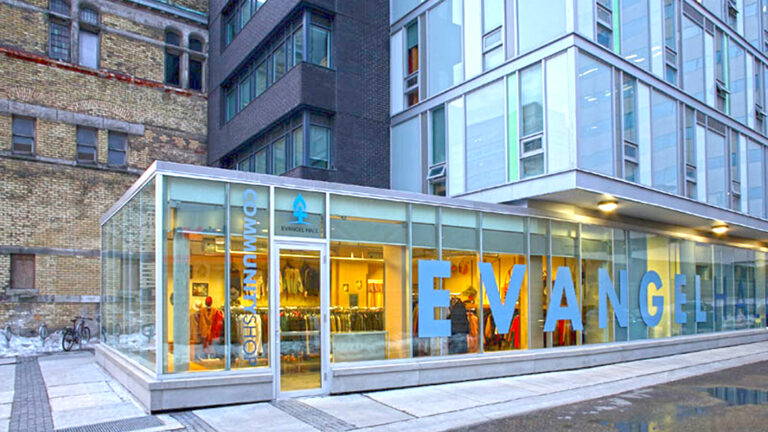The housing market for people with intellectual disabilities can feel like navigating a maze without an exit. To demystify the process, a go-to guide for renters with intellectual disabilities, their caregivers and their landlords is being prepared by the National Affordable Housing Corporation, with the help of a $50,000 grant from the Centre.
People with disabilities face unique challenges when seeking housing, from financial constraints and limited options to the barrier of subconscious and conscious discrimination. The situation is particularly dire for tenants with intellectual disabilities who often live in substandard housing and are susceptible to victimization that includes being taken advantage of by landlords and others in the neighbourhood.
According to Inclusion Canada, a “disproportionate number of people with intellectual disabilities are in core housing need,” meaning their accommodations are deemed unaffordable or inadequate. In fact, nearly one person in five with developmental disabilities over age 15 live in a household in core housing need, almost double the national average.
According to Doris Rajan, in her paper “Women with Disabilities & Housing,” although housing discrimination is illegal, it is also commonplace as victims “face […] ‘screening out’ practices by landlords, including ‘evictions for disability‐related behaviours and failure to accommodate disability‐related needs.’ This is made worse because of a lack of resources or ‘power to bargain with landlords.’ ”
The challenges are multiplied when the tenant in question is a person with intellectual disabilities. At the Community Housing Transformation Centre, we know that social inclusion is what most fundamentally distinguishes community housing from other types.
In harmony with our commitment to inclusion and encouraging participation, the Centre has awarded $50,000 to the National Affordable Housing Corporation to design and disseminate a Real-Life Rental Guide for Empowering Inclusion in Affordable Housing. The handbook aims to raise public awareness and offer a unique tenant-centred approach that property managers and landlords can use to understand and house persons with intellectual disabilities in a more inclusive manner.
“The Centre’s support is helping us achieve more meaningful community inclusion for our tenants with intellectual disabilities living at Willowview Heights,” notes Stacie Beever, chief operating officer at the Corporation. “We look forward to sharing the learnings, knowledge and best-practices gained from this project with housing- and service-providers locally, provincially and nationally, as this project progresses.”
Tool for empowerment
The NAHC began building Willowview Heights, a 72-unit mixed affordable market rental development in Saskatoon, in 2020. The project includes six affordable rental units that can house nine people in all and are designated for low-income persons with intellectual disabilities.
“This affordable-housing initiative truly represents an exciting new model of housing and inclusivity for persons with intellectual disabilities,” explains Beever. To ensure a smooth, meaningful housing experience, the idea for a go-to guide for renters with intellectual disabilities, their caregivers and landlords was born. The objective of the Real-Life Rental Guide is to ensure tenant participation is meaningful, reflects their rental experiences and increases the likelihood of a positive relationship with landlords.
A timely project, according to Beever. “Due to the Covid-19 pandemic, this is even more important since many of these tenants are also immunocompromised and susceptible to experiencing greater mental-health challenges during this time of social distancing and isolation.”
And to make sure the Guide gets it right, the organization has partnered with Inclusion Saskatchewan, a pioneer in the fight for equality for people with disabilities.
“We hope to have this resource recognized as a practical tool of empowerment for tenants with intellectual disabilities. The NAHC and Inclusion Saskatchewan [will] work with their existing contacts in the housing, social and non-profit sectors to promote the findings of this project and promote the use of the resource,” says Beever.
Community engagement will be conducted at all levels of this project.
The NAHC is proposing to use the $50,000 grant, in addition to $10,500 of its own funds, to:
- Increase and promote access to information
- Build capacity around housing decisions and responsibilities
- Improve tenant, landlord and neighbour communications, understanding and problem-solving (e.g., damages, repairs, complaints, sensitivities, etc.)
- Reduce incidence of eviction and risk of homelessness
- Increase participation in housing-related decisions and projects through the development of a plain-language guide for persons with intellectual disabilities
- Document and highlight the successes of this unique tenant-based initiative so persons with intellectual disabilities in other communities can benefit from lessons learned
“We are thrilled to get this work started!” says Beever. “We truly believe our efforts to document and share the learning and best practices through this initiative will create ripples of benefit in other communities as it relates to providing supportive and inclusive housing for persons with intellectual disabilities.”



